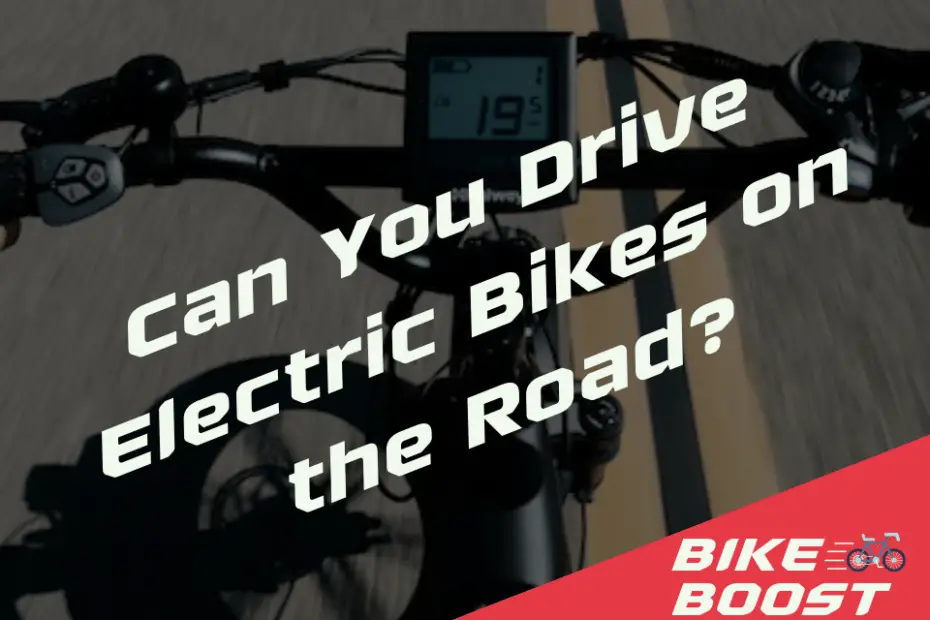We love writing these guides for you and sometimes we are compensated when you use one of our links to buy a product. This doesn’t impact the final price you pay. If you want to learn more about how this works, please see our Affiliate Disclosure page.
If you have ever asked, “can you drive electric bikes on the road?”, you are not alone. Electric bikes, also known as e-bikes, have gained popularity as an alternative mode of transportation. They offer the convenience of a bicycle with the added power of an electric motor. In this article, we will explore the regulations surrounding electric bikes and whether you can drive them on the road.
Understanding Electric Bikes
Before diving into the legal aspects, let’s take a moment to understand what electric bikes are. An electric bike is essentially a bicycle equipped with an electric motor that assists the rider while pedaling. These motors come in various power ratings, typically ranging from 250 watts to 750 watts. The motor provides assistance to the rider, making it easier to pedal and ride longer distances without exerting excessive effort.
Electric Bikes and Road Regulations
The regulations regarding electric bikes can vary from country to country and even within different regions. In general, electric bikes are classified into three main categories based on their maximum speed and power output.
- Class 1 Electric Bikes: These e-bikes provide assistance while pedaling and have a maximum speed of 20 miles per hour (32 kilometers per hour). They are allowed on most roads and bike lanes, similar to traditional bicycles.
- Class 2 Electric Bikes: Class 2 e-bikes also have a maximum speed of 20 miles per hour (32 kilometers per hour). However, they can be operated without pedaling, as they are equipped with a throttle. The regulations regarding Class 2 e-bikes vary, with some regions allowing them on roads and bike lanes, while others restrict them to specific areas.
- Class 3 Electric Bikes: Class 3 e-bikes can reach higher speeds, with a maximum assisted speed of 28 miles per hour (45 kilometers per hour). To operate a Class 3 e-bike on the road, riders may need to adhere to additional regulations, such as wearing helmets or age restrictions.
It’s important to familiarize yourself with the specific rules and regulations in your area to ensure compliance when riding your electric bike. You can also convert your mountain bike to an electric bike or turn your regular bike into an electric bike using conversion kits available in the market. These kits allow you to enjoy the benefits of an electric bike without having to purchase a new one.
Safety Measures and Considerations
While electric bikes offer an exciting and efficient means of transportation, it’s crucial to prioritize safety when riding on the road. Here are a few safety measures and considerations to keep in mind:
- Wear Protective Gear: Just like riding a regular bicycle, wearing a helmet and other protective gear is essential for your safety.
- Follow Traffic Laws: Obey traffic laws and regulations just as you would while driving a car or riding a traditional bicycle. This includes following traffic signals, using appropriate hand signals, and yielding to pedestrians.
- Be Visible: Ensure your electric bike is equipped with proper lighting, reflectors, and a bell or horn to make yourself visible to other road users.
- Stay Alert: Remain attentive and aware of your surroundings at all times. Keep an eye out for potential hazards, such as potholes or debris on the road.
It’s worth noting that you can charge your e-bike while riding in some cases, depending on the model and specifications. However, it’s important to follow the manufacturer’s guidelines and ensure your safety while doing so.
Conclusion
In conclusion, electric bikes can be driven on the road, but the specific regulations may vary depending on your location and the classification of your e-bike. Familiarize yourself with the local laws and regulations to ensure a safe and legal riding experience. Whether you decide to convert your bike into an electric bike or purchase a ready-made e-bike, remember to prioritize safety and follow the recommended guidelines. Electric bikes offer an eco-friendly and convenient mode of transportation that can enhance your cycling experience.
FAQs
Can I convert my mountain bike to an electric bike?
Yes, you can convert your mountain bike to an electric bike using conversion kits available in the market.
Can I turn my bike into an e-bike?
Absolutely! There are conversion kits and retrofitting options available that can help you turn your regular bike into an electric bike.
Can I add an electric motor to a bicycle?
Yes, it is possible to add an electric motor to a bicycle using conversion kits or by purchasing an electric bike directly.
How to convert a cruiser bike to electric?
Converting a cruiser bike to electric can be done by installing a conversion kit that matches the specifications of your cruiser bike. Learn more about the process here.
Where can I get my bike converted to electric?
You can explore local bike shops or online retailers that specialize in electric bike conversion kits to get your bike converted to electric.
How often should I charge my electric bike?
The frequency of charging your electric bike will depend on various factors such as battery capacity and usage. However, it is generally recommended to charge it after every ride or when the battery level is low. Learn more about charging your e-bike here.
Andy is an avid cyclist who enjoys nothing more than a ride out in the hills. Competing in track, road, time trial and mountain bike events in the past, he prefers slower rides out with his family these days.

